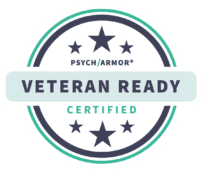What is Exposure Therapy?
When someone has experienced trauma, an anxiety disorder, a substance addiction, or any combination of the three, the last thing they want is to be exposed to anything that reminds them of the trauma or fear. So it’s understandable that the concept of exposure therapy for mental health or addiction could seem frightening or dangerous. But exposure therapy is evidence-based and highly effective for trauma-based disorders like PTSD, anxiety disorders and phobias, substance use disorder, and co-occurring disorders.
At the Ranch at Dove Tree, in Lubbock, Texas, we believe in providing our clients with the best possible tools to maintain their mental health and sobriety after their treatment program ends. We believe that, when necessary, exposure therapy can be an essential tool in that toolkit.
What Is Exposure Therapy?
Exposure therapy, at its core, is a type of talk therapy that has much in common with cognitive behavioral therapy. Like CBT, the goal of exposure therapy is to help a client lower their stress response to particular triggers by relaxing their body and managing the automatic negative thoughts that arise in response to the triggers.
While exposure therapy doesn’t take away memories of a traumatic event, the immediate anxiety response to certain situations, or the periodic cravings for substances, it helps to lessen the impact of those memories and feelings and make cravings more manageable.
So, will exposure therapy make you relieve a trauma or fear all over again? What if it triggers cravings so intense that you relapse?
Those questions are often the first that people think of when they try to imagine what exposure therapy will entail. Let’s explore the answers.
What is the Relationship Between Trauma or Anxiety and Addiction?
People often turn to substances as a way to avoid the feelings that arise in certain situations that trigger bad memories or fears. Of course, substance use may provide some short-term relief, but it doesn’t help anyone overcome their fear. When fear is avoided, it continues to deteriorate your health on all levels: physical, emotional, mental, and spiritual.
This is why exposure therapy can be so important: it gently removes the barriers that you’ve been using to avoid the fear or trauma that drives your behavior.
What Happens During Exposure Therapy?
One of the outcomes of exposure therapy is that it helps clients stop fearing the past trauma. Yet, many people are terrified at the thought of having to “relive” their experience. What you’ll learn in therapy is that you can go at your own pace and remain in control. You open up as you can. Your therapist will always prepare you for what’s to come.
Here’s what to expect, in general, when receiving exposure therapy:
- Your therapist will talk to you about what exposure therapy involves.
- You’ll provide some information about your past so that your therapist can direct and support you through this process.
- Next, you’ll practice breathing techniques that help to calm the central nervous system. These can help you work through any anxiety you feel.
- In one of your first few sessions, your therapist will help you to make a list of all of the people, things, experiences, and locations you have avoided since you suffered the trauma.
- You’ll work one by one through that list to think about why you avoid the thing and open up as much as you can about that experience.
- Over time, the more you talk about it and allow yourself to explore the topic, the easier it gets. You’ll find that you don’t feel the same anxiety, heart-pounding fear, and worries that you did initially.
There are several levels of exposure therapy that you and your therapist can choose from based on our situation.
What are the Different Levels of Exposure Therapy?
Different degrees of exposure therapy may be used, depending on the client’s readiness and the type of fear or trauma being addressed: in vivo, imaginal, interoceptive, and virtual reality.
- In vivo exposure – This involves facing a fear directly in real life. For example, if someone in addiction recovery is afraid of going to restaurants because of the exposure to alcohol, an in vivo exposure might involve going to a restaurant with the therapist and talking through the anxieties and emotions that are triggered. If someone is afraid of dogs, they might be asked to visit a dog park with their therapist or a trusted friend and practice breathing techniques to help themselves feel calm.
- Imaginal exposure – This works best for people who struggle with stressful traumatic memories. They are unable to revisit the traumatic situation in real life, so the therapist helps them imagine the event and talk about their feelings as they remember what happened.
- Interoceptive exposure – This is used for people who fear the physical sensations brought about by their anxiety or cravings more than they fear the anxiety itself. For example, if someone is afraid of feeling breathless, they might be asked to run up and down the stairs. After inducing the breathless feeling, they can then talk with the therapist about the emotions involved.
- Virtual reality exposure – When it’s not possible or too dangerous to revisit a negative experience or place in person, virtual reality technology might be used to simulate the situation.
In all types of exposure, the point of the exercise is to help decrease the client’s fear response. Having a compassionate, nonjudgmental therapist to talk through one’s reactions with and learning techniques to mentally and physically calm oneself can yield highly effective results.
Most people begin to see improvement in their overall symptoms within a few sessions, but real progress continues over time.
When you reach out to our west Texas team, we’ll create an individualized treatment plan to address your specific needs and structure your care around the very specific level of support you need. While we believe in the value and effectiveness of exposure therapy, you can rest assured that we will never force a treatment that makes you feel unsafe. Our primary goal is to provide you with the resources you need to address underlying issues that drive addiction and to empower you to manage your health and sobriety with ease.
Don’t let fear and trauma limit your future. Reach out to our admissions counselors to discuss treatment options.
CALL TODAY for a free, confidential assessment.
806-307-2003














